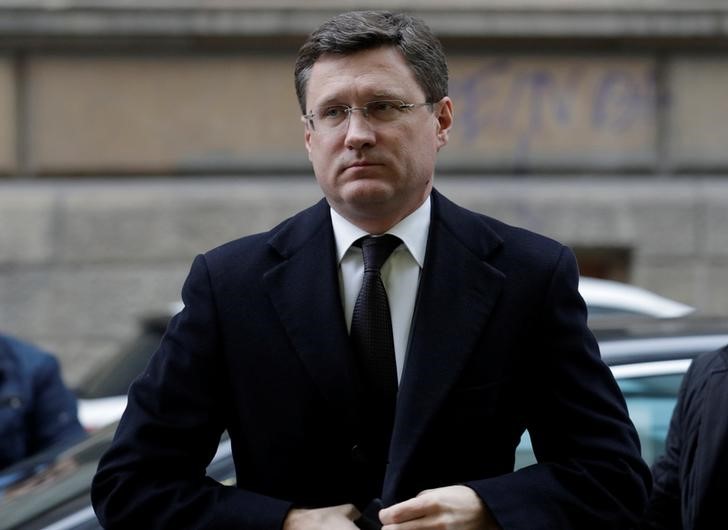MOSCOW (Reuters) - Global oil stockpiles, the benchmark for a global supply pact, have been on the decline despite a production boost in the United States, Russian Energy Minister Alexander Novak said on Tuesday.
The Organization of the Petroleum Exporting Countries and other large oil producers, led by Russia, have agreed to cut their combined oil output by about 1.8 million barrels per day (bpd) to reduce bloated inventories and prop up oil prices.
Brent crude (LCOc1) reached a three-year peak at more than $70 a barrel thanks to the efforts to restore market balance. It has since fallen to about $62 as the United States, which is not part of the supply pact, has boosted shale oil output.
"We are looking at the situation as a whole (and) see that the stockpiles have been shrinking anyway," Novak said after a speech at a committee of the Russian Federation Council, the upper house of parliament.
"The shale oil increase does not cover both the demand rise and production decrease," he added.
The U.S. Energy Information Administration last week said that it expects domestic crude oil production to rise by more than previously expected this year.
The agency forecast that U.S. crude oil output will rise by 1.26 million bpd to 10.59 million bpd in 2018. For 2019, it raised the production growth forecast slightly to an increase of 590,000 bpd to 11.18 million bpd, surpassing Russia as the world's largest oil producer.
Novak also said that the average oil price for this year is expected to be "close to $60".
Speaking to the lawmakers, Novak said that Russian oil companies and the state budget have gained about $43 billion thanks to the higher prices resulting from the supply pact, the RIA news agency reported.

Of that, the state budget had gained 1.7 trillion roubles ($29.4 billion) since early 2017 when the pact started.